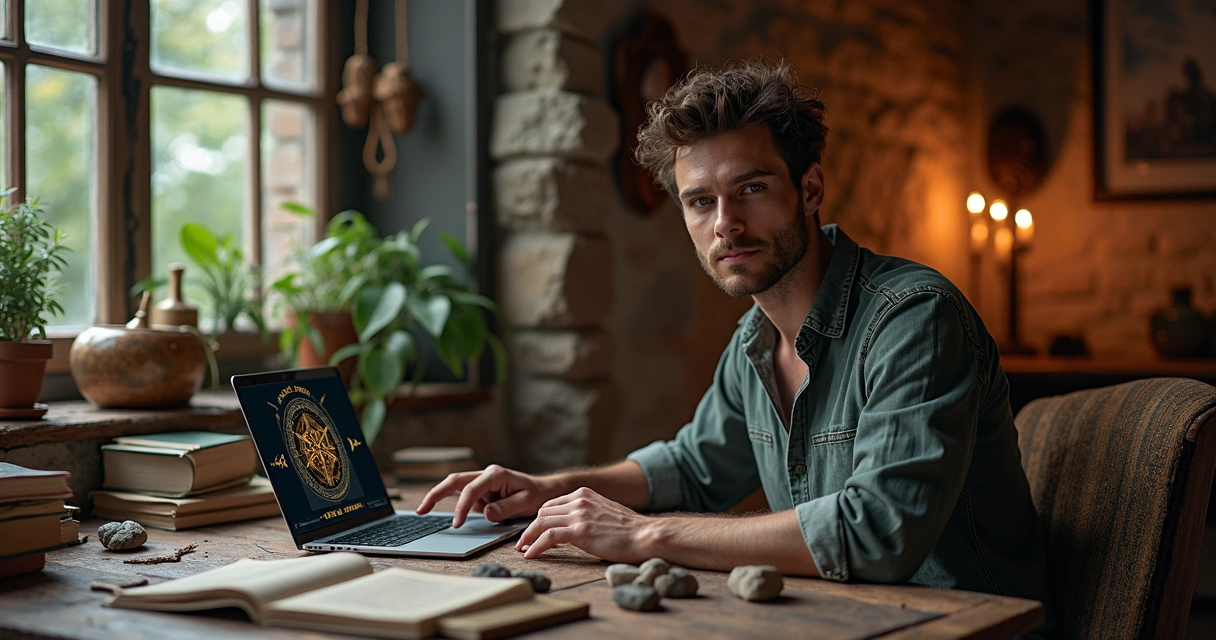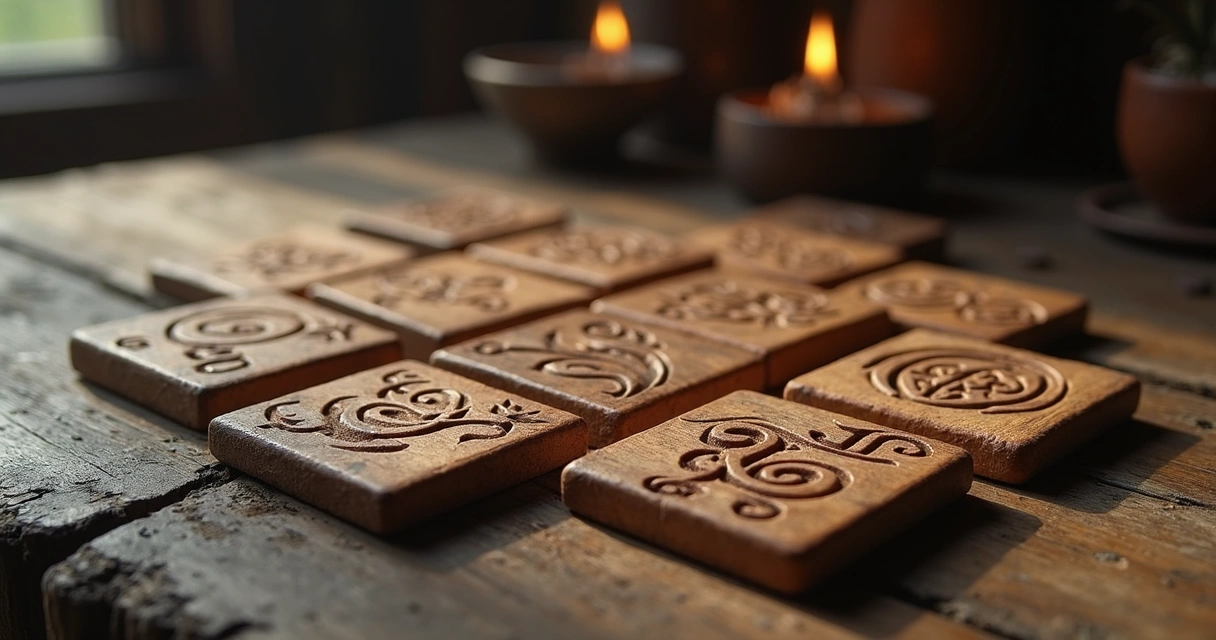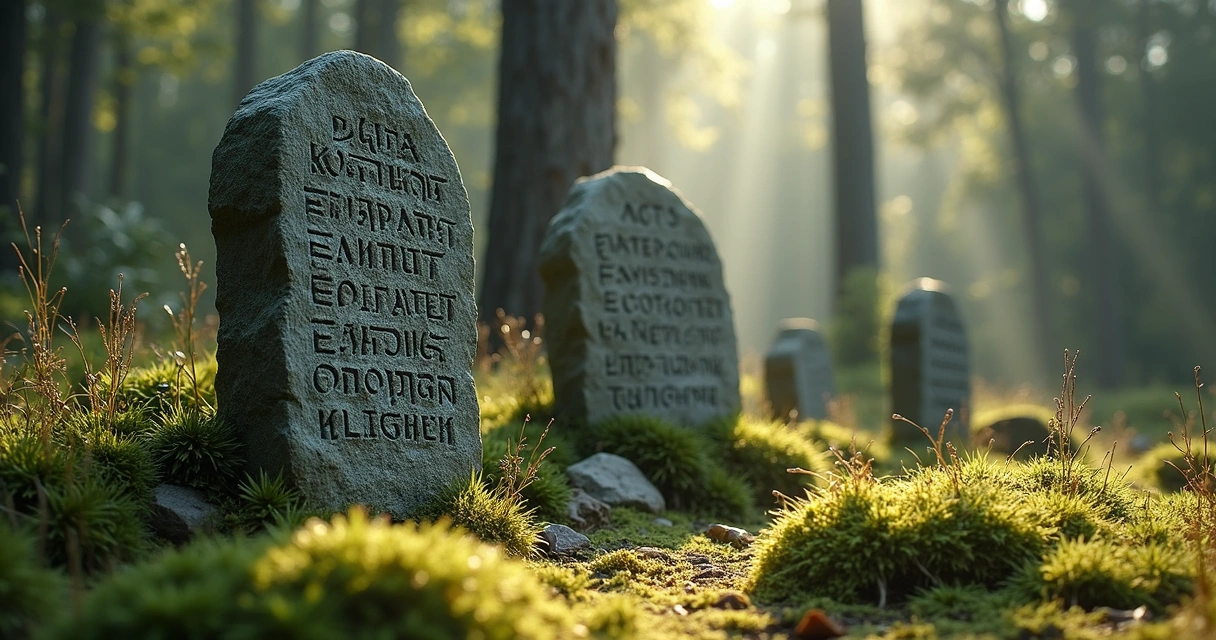Elder Futhark runes have captured the curiosity of seekers from all walks of life. They are more than ancient markings—each one carries stories, secrets, and symbols connected to Norse heritage. For those of us who work with Tarot, Lenormand, or other oracular systems, the runes can offer a fresh layer of insight. In this guide, we aim to illuminate the fascinating history, structure, and practical use of these powerful glyphs, weaving together research, lived experience, and the support of modern tools like MysticLog.
The origin and evolution of Elder Futhark
The first thing we encounter when studying runes is their mysterious past. The script that we now call Elder Futhark likely emerged in northern Europe during the first centuries AD, as noted by the University of Texas at Austin. It is named for the initial six runes: Fehu, Uruz, Thurisaz, Ansuz, Raidho, and Kenaz, whose sounds together give us the term “futhark.”
Most sources agree that the earliest evidence of Elder Futhark connects it to Germanic tribes in Scandinavia, Germany, and Eastern Europe, with inscriptions found on objects like the Garbølle box and Skåne clasp. These written traces were carved into bone, wood, stone, or metal.
Every rune is a doorway—a meeting of word, symbol, and world.
Although runes are often associated with magic, early texts and studies describe practical uses too: marking territory, naming objects, recording deals, or remembering the dead. Over time, mystical and divinatory uses grew more prominent, especially as Norse myths and sagas spread.
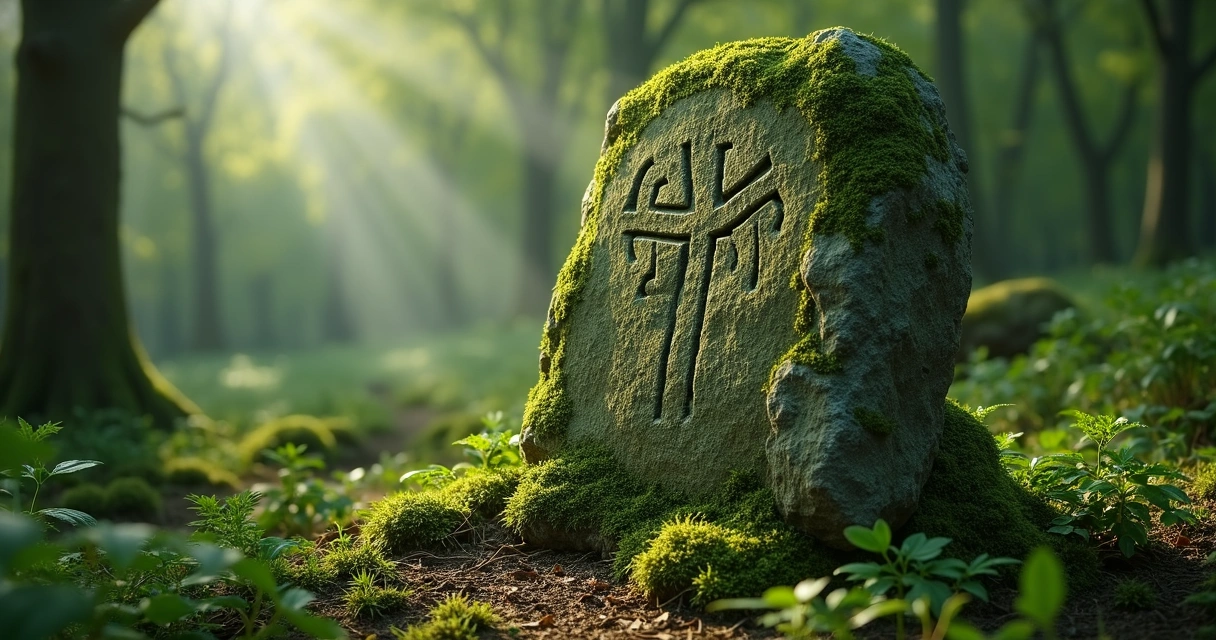 Historical context and transition
Historical context and transition
Elder Futhark’s use extended from approximately the 2nd to 8th centuries AD. As Nordic languages evolved and societies shifted, so did the characters themselves: from about the 8th century onward, the script simplified into the Younger Futhark, which dominated Viking Age texts. However, Elder Futhark remains the script most closely tied to the early spiritual practices and mythic imagination of northern Europe.
It is fascinating, we think, to witness how these runes moved from daily objects to sacred ritual and divination, reflecting the blended nature of practical and spiritual life. Sometimes, in our own readings, we feel that same seamless link between the mundane and the mystical.
The structure: aettir and their significance
Understanding the organization of Elder Futhark is key to working with it intuitively. The runic alphabet comprises 24 characters, grouped into three families, or “aettir.” These aettir, each with eight runes, are not arbitrary divisions; they shape the journey of the script and give layers of meaning to any reading.
- First aett (Freyr/Freya’s aett): Related to beginnings, primal energies, and worldly matters.
- Second aett (Heimdall’s aett): Themes of transformation, challenges, and social interaction.
- Third aett (Tyr’s aett): Symbolizes wisdom, legacy, and spiritual culmination.
Some interpretations ascribe these divisions to Norse deities, and while the details may differ from source to source, the broad progression—from foundation through ordeal to insight—runs true across runic practice. The grouping also assists us in organizing study or, with a tool like MysticLog, tracking patterns and connections in our work.
Three aettir, three paths—origin, change, and meaning.
 Individual rune meanings and divinatory symbols
Individual rune meanings and divinatory symbols
Runes are more than letters; each is a symbol, a sound, an energy, and a story. Drawing on the Old English Rune Poems and Norse sagas, we present a brief guide to the 24 Elder Futhark runes. While traditional meanings are a starting point, personal experience colors each interpretation. The below serves as a foundation for divinatory use, especially suited for those archiving, tracking, or discussing readings using MysticLog.
First aett: beginnings and resources
- Fehu (F): Cattle, wealth, abundance. Means assets, beginnings, new energy. In readings, Fehu often represents material or emotional gain, or the start of a new cycle.
- Uruz (U): Wild ox, strength, health. Raw primal power, endurance. When this rune appears, we look for sources of resilience and hidden power.
- Thurisaz (TH): Giant, thorn, challenge. Shock, defense, outside force. It can be a warning or a nudge to stand strong.
- Ansuz (A): God, mouth, communication. Inspiration, wisdom from higher sources. Suggests learning, messages, or advice from elders or guides.
- Raidho (R): Journey, wheel, movement. Travel, rhythm, alignment. This points to progress, whether physical or metaphoric.
- Kenaz (K): Torch, knowledge, creativity. Revelation, illumination. Kenaz lights the way, revealing opportunities or solutions.
- Gebo (G): Gift, exchange, connection. Partnerships, generosity, sharing. Signals equality in give and take, or unexpected blessings.
- Wunjo (W): Joy, harmony, bliss. Contentment, unity. Often signifies a time of celebration or inner harmony.
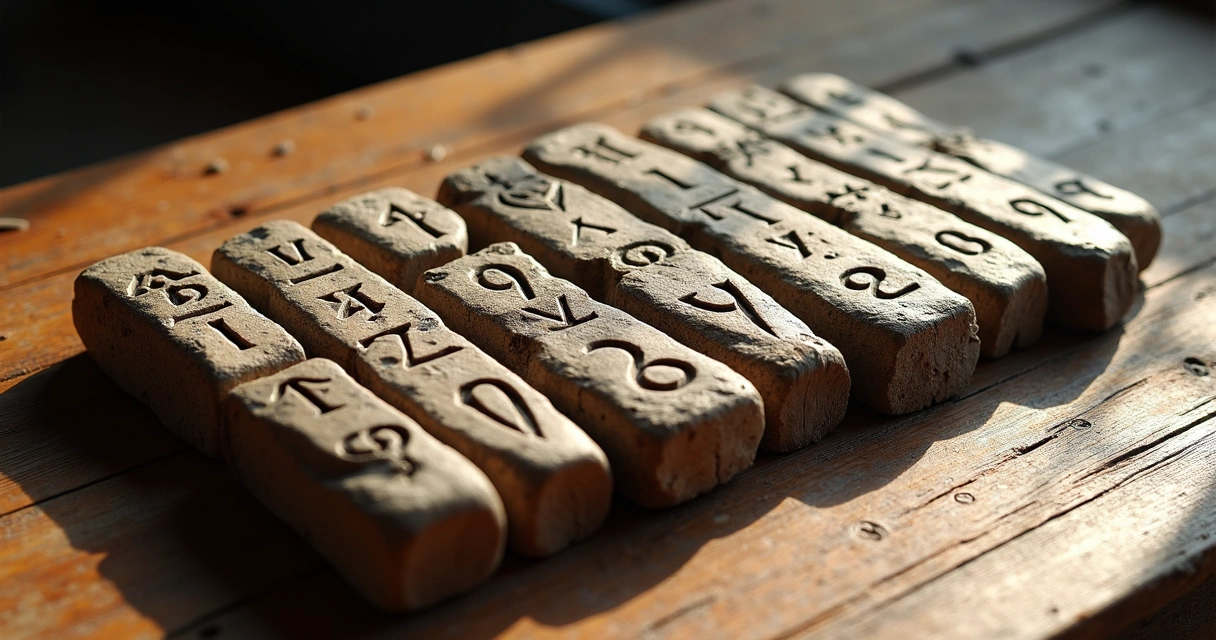 Second aett: trial and transformation
Second aett: trial and transformation
- Hagalaz (H): Hail, disruption, transformation. Unpredictability, testing times. In readings, Hagalaz asks us to weather sudden changes with patience.
- Nauthiz (N): Need, necessity, constraint. Frustration, resistance. This rune calls attention to blocks or learning through hardship.
- Isa (I): Ice, stasis, pause. Standstill, waiting. As a rune of stillness, Isa often means a situation is frozen, requiring patience.
- Jera (J): Year, harvest, cycles. Fruition, slow development. Jera suggests natural timing, rewards coming after a period of effort.
- Eihwaz (EI): Yew, resilience, transition. Endurance, transformation. Can indicate facing significant change with inner strength.
- Perthro (P): Cup, mystery, fate. Chance, secrets, the unknown. Perthro often means we cannot know all outcomes—trust is required.
- Algiz (Z): Elk, protection, sanctuary. Shield, divine guidance. Draw this when safety or spiritual protection is at hand.
- Sowilo (S): Sun, victory, success. Wholeness, clarity. Sowilo brings illumination and a sense of purpose.
Third aett: wisdom and legacy
- Tiwaz (T): Tyr, justice, principle. Truth, order, sacrifice. Tiwaz encourages taking honorable action, even at cost.
- Berkana (B): Birch, growth, nurturing. New life, fertility. This rune supports beginnings, healing, or family matters.
- Ehwaz (E): Horse, partnership, movement. Trust, progress. Ehwaz points to cooperative ventures and shared goals.
- Mannaz (M): Man, self, society. Humanity, collective identity. Mannaz underlines connection to others and the need for self-reflection.
- Laguz (L): Water, intuition, flow. Emotions, adaptability. This rune aligns with deep feelings, dreamwork, or going with the current.
- Ingwaz (NG): Seed, potential, inner growth. Gestation, results yet to come. Suggests latent progress—the work is not visible but is happening.
- Dagaz (D): Dawn, breakthrough, transition. Awakening, hope. Dagaz heralds a turn of fortune: what was dark becomes light.
- Othala (O): Ancestral property, heritage, boundaries. Home, legacy. Draw this rune to work with inheritance, cultural roots, or matters of belonging.
Each rune whispers its own story. Listen well.
Rune reversals and nuances
Unlike Tarot, not all runes have a strictly reversed (merkstave) meaning. Some, like Isa or Hagalaz, present as symmetrical or unidirectional. However, many readers find that orientation, placement, or context can subtly shift interpretation.
Using MysticLog, we document not only the runes pulled but also their arrangement, position, and any patterns of repetition—allowing deeper insight as we build nuanced readings over time.
Norse mythology and symbolism in runic practice
Working with these symbols, we cannot help but feel the shadow of Norse myth in every rune. Odin, in particular, is said to have hung for nine nights from Yggdrasil, the World Tree, in order to win the runes and their wisdom—an act that often surfaces in meditative readings or when we guide new students into rune work.
Runes were not just letters for the ancestors; they were doors to unseen truths. As studies at the University of Chicago highlight, rune stones and inscriptions were often placed in ritual contexts or used to “cast lots”. The lines between magic, writing, and reality blurred.
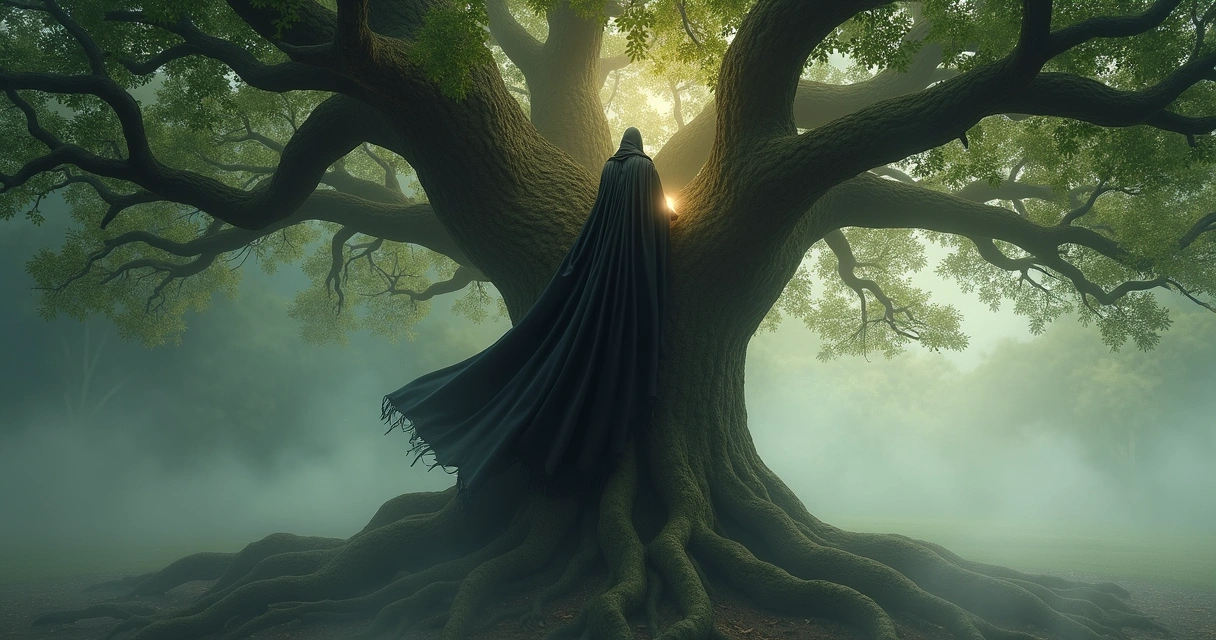 Working with Elder Futhark deepens our connection to these stories. When we draw a rune, we often sense both the presence of the ancestors and the universal message each symbol carries.
Working with Elder Futhark deepens our connection to these stories. When we draw a rune, we often sense both the presence of the ancestors and the universal message each symbol carries.
Symbolic associations
- Fehu – Freyr (fertility god), prosperity, cattle
- Ansuz – Odin, insight, poetic inspiration
- Algiz – Valkyrie, swan wings, protection
- Tiwaz – Tyr, sacrifice, justice
- Berkana – Frigga, nurturing love
These mythological links can color interpretations, especially in spiritual guidance work or when tracing a querent’s deeper story. By recording not only the rune but the mythic flavor it brings, we find our readings become more layered and alive.
Elder Futhark vs. Younger Futhark: Why does it matter?
We are sometimes asked, especially by students, about the difference between Elder and Younger Futhark. The answer may seem technical at first, but it shapes divinatory practice quite a bit.
While Elder Futhark has 24 runes, Younger Futhark distills the system down to 16 characters. The shift happened as Old Norse evolved in the Viking Age, requiring less phonetic detail. For magical or seeking purposes, Elder Futhark tends to be the preferred set: its rune meanings feel wider in scope, more specific, and often more consistently described across sources.
For readings—particularly those where we wish to track subtle shifts, map out storylines, or compare over time—the extra runes offer nuance and rich symbolism. That’s why, in MysticLog and our educational content, we recommend Elder Futhark for those wanting a full runic alphabet, regardless of background or experience level.
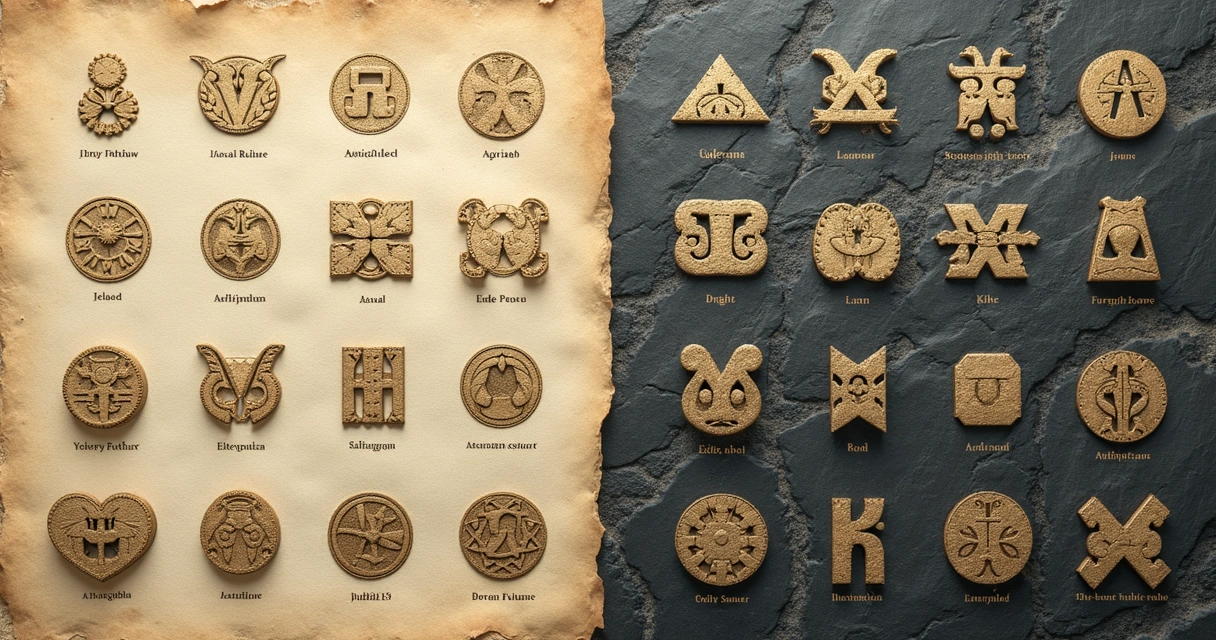 Historical utility and spiritual legacy
Historical utility and spiritual legacy
As outlined by the University of Texas at Austin, many early rune inscriptions were not magical at all but rather simple markers of ownership or memory. However, the move to the Younger Futhark coincided with a growing association of runes and their use in storytelling, poetry, and cryptic spells. Both systems mirror societal changes, but Elder Futhark offers more versatility for oracular or self-reflective work.
Runes in divination: principles and practices
Using runes in divination brings together history, myth, personal intuition, and structured method. The act itself is simple: we cast, draw, or lay out runic tokens or cards, focusing on a question or situation. Interpretation emerges through a blend of traditional meanings, personal insight, and the pattern in which runes fall.
We always recommend setting intention before a reading, clearing mind and space, and approaching the runes with curiosity and respect. This opens the way for meaningful guidance—whether for ourselves or for others.
Casting methods
- Single Rune Draw: Focus on a question and draw one rune for quick insight.
- Three Rune Spread: Past, present, future; situation, challenge, advice; or any other dynamic triad.
- Runic Cross: A five-rune layout emulating similar shapes in Tarot, often to identify root cause, present, challenge, advice, and potential outcome.
- Free Casting: Scatter a handful of runes on a cloth and interpret those that fall face up, noting their placement in relation to one another.
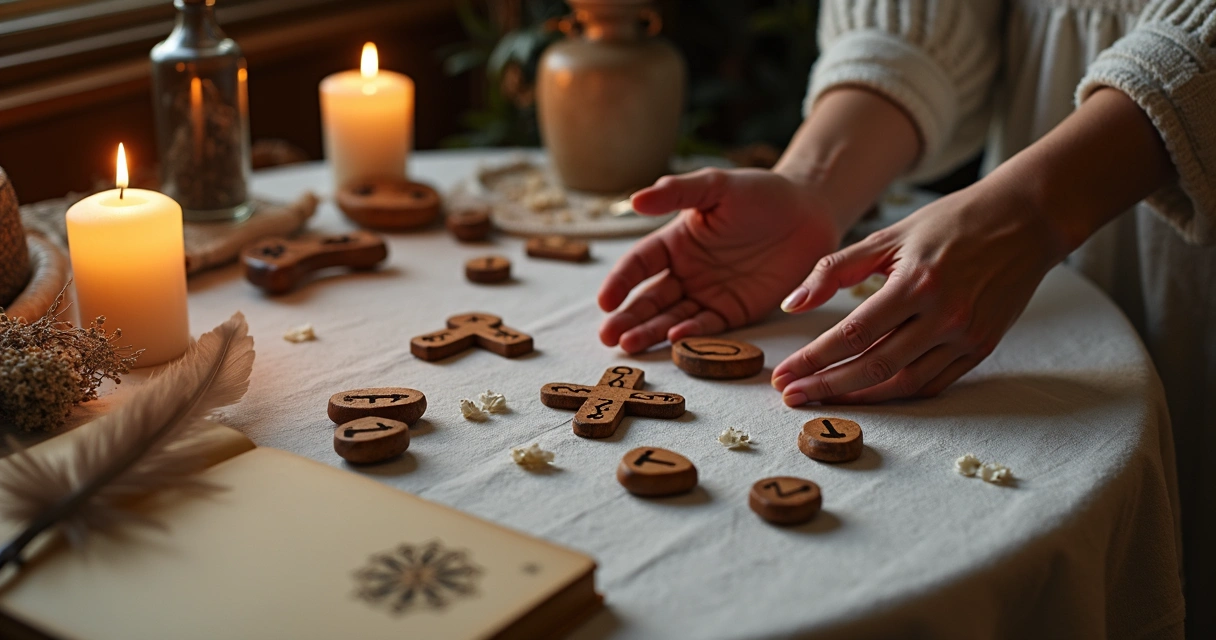 For detailed explanations on methodologies and step-by-step tutorials, the beginner’s guide to reading runes is a valuable resource.
For detailed explanations on methodologies and step-by-step tutorials, the beginner’s guide to reading runes is a valuable resource.
The flow of interpretation
- Look up each rune’s meaning, noting both traditional associations and what stands out intuitively.
- Observe the relationships between runes. Are they reinforcing each other, conflicting, or telling a narrative?
- Consider context: What is the querent’s situation? What question was asked?
- Reflect on reversals or peculiar arrangements. Is there something hidden or unexpected?
- Write everything down, even flashes of inspiration or symbols that make sense only after some time.
Through consistent record-keeping, patterns emerge—helpful for tracking both our personal paths and our work with clients. MysticLog and similar digital tools make this process easier and more systematic for professionals.
Practical rune reading: an example session
To show how all these threads meet in daily practice, we want to walk through a hypothetical reading using the three-rune method.
- Querent’s Question: What should I focus on to find career fulfillment?
- Drawn Runes: Uruz (Strength), Isa (Stasis), Sowilo (Success).
Interpretation:
- Uruz (First Position: Past/Root) suggests the querent has foundational strength, perhaps overcoming hardship. Reinforces a period of learning strength and developing stamina.
- Isa (Second Position: Present/Challenge) reflects a current stalemate. The querent may feel stuck, blocked, or lacking momentum.
- Sowilo (Third Position: Advice/Outcome) promises achievement, clarity, and renewed focus—if the querent can be patient and persistent, the “thaw” will come and light will return.
We would build this interpretation into our notes on MysticLog, tagging the reading under “career,” linking to the aettir meanings, and perhaps adding further insights suggested by the AI assistant. Over time, the log would reflect themes, cycles, and changes unique to the querent.
Patterns appear in the journey when we pause to see them.
Modern rune study and tracking with MysticLog
Many modern readers work digitally, both for convenience and to build a personal knowledge base. We designed MysticLog to support runic study and reading in just this way—making it simple to organize rune readings, add notes on interpretation, log client queries, and look for recurring symbols.
Some ways to use MysticLog in runic practice include:
- Recording each reading with date, focus question, layout, and drawn runes.
- Tagging readings by theme (love, work, intuition, healing, etc.).
- Writing detailed notes on symbolism, with cross-references to Norse myths or personal feelings.
- Using the AI assistant to receive suggestions for meanings, alternative viewpoints, and follow-up questions.
- Reviewing past readings for ongoing themes, transformation, and cycles.
This process streamlines what was once scattered across many notebooks—a benefit we often wish we had starting out ourselves.
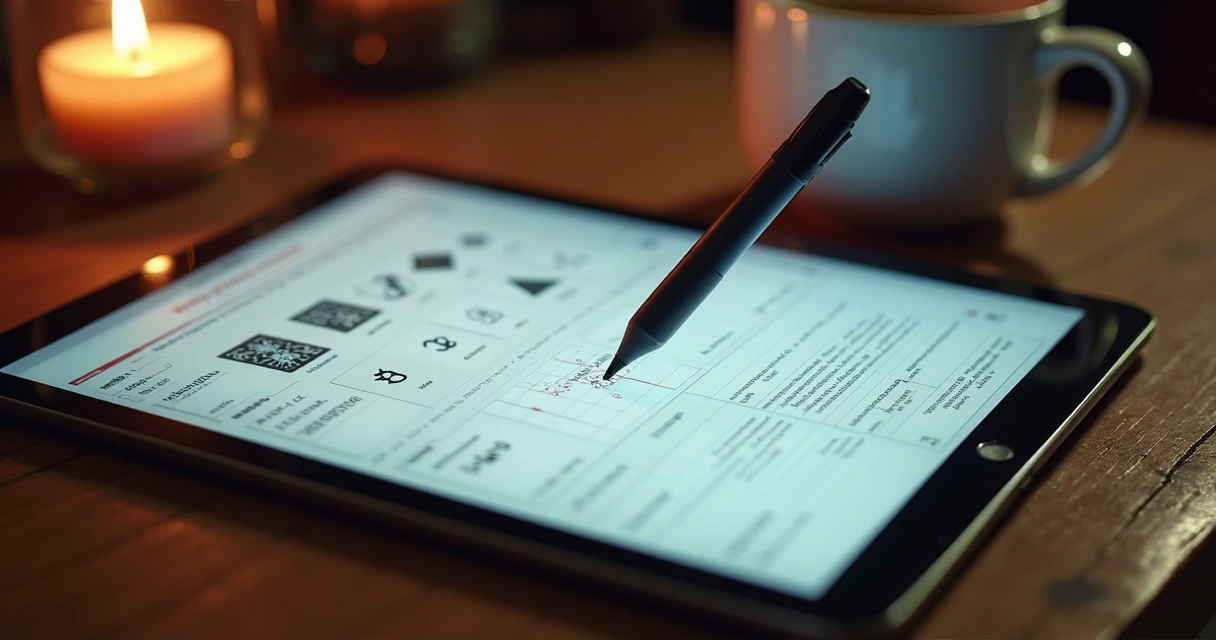 Benefits for professionals and students
Benefits for professionals and students
- Professionals can easily retrieve any client’s past reading, tracking growth or recurring lessons for richer follow-up conversations.
- Students can build their own rune “dictionary” and follow learning prompts from the AI assistant, useful for memorization and confident interpretation.
Those interested can read even more about the broad history and evolving use of runes at our detailed runes guide.
Broader spiritual and divinatory context
Runic divination shares common threads with Tarot, Lenormand, and other oracle systems: symbolism, story, and a search for meaning. For those already familiar with cards, learning the Futhark brings new perspectives but familiar tools—layouts, journaling, and reflection.
Connecting Elder Futhark study to other oracles can spark new layers of insight, especially as cross-symbolic themes emerge. Many readers have found, for instance, that Sowilo (the Sun) pairs naturally with the Tarot Sun, or that Isa (Stasis) resonates with the Tarot Hanged Man. These kinds of inter-system correspondences bring clarity to both readings and study.
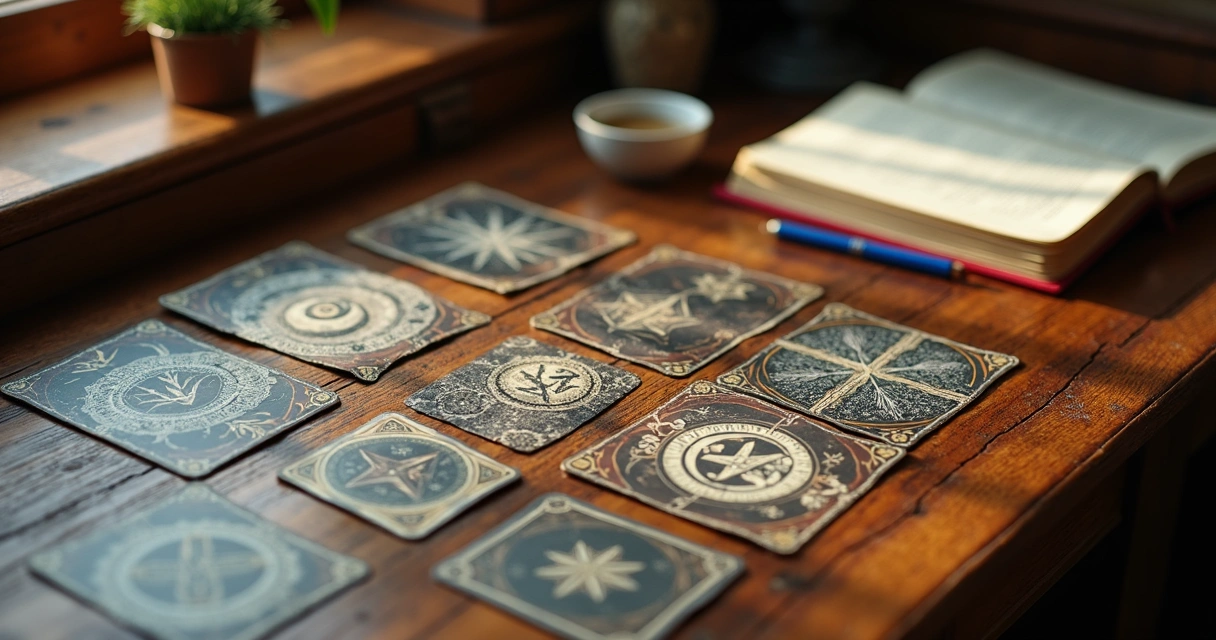 For those curious about how runes fit into a wider landscape of spiritual work, our sections on spirituality and oracles are thoughtful places to begin.
For those curious about how runes fit into a wider landscape of spiritual work, our sections on spirituality and oracles are thoughtful places to begin.
Why use digital tools?
While some readers cherish only pen and notebook, we find that digital platforms like MysticLog make it easier to reference, recall, and share rune knowledge—all without losing the personal touch.
- No more lost notes or forgotten readings.
- Automatic organization by date, topic, or querent.
- Easy to connect rune study with card spreads, seasonal cycles, or personal milestones.
We are always developing prompts and journal features that build confidence in both casual students and working professionals.
Rune study prompts and digital journaling
To grow a relationship with the Elder Futhark, we recommend using a blend of traditional study and open-ended journaling. Here are some prompts and exercises for both solo and client work, which you can record in MysticLog or in your preferred system:
- Pick a rune at random each day. Meditate on it and write how it shows up in your life that day.
- Study the myth connected to each rune. Does knowing the story change your sense of its power?
- Pair runes with Tarot or Lenormand cards in a combined spread. How do the symbols interact?
- Track how certain runes cluster together in readings over time. What patterns appear?
- Ask the AI assistant in MysticLog for suggested alternative interpretations or journaling prompts, especially when a reading feels stagnant.
- At lunar or solar milestones, cast a full rune spread and journal reflections on the cycle.
- For each drawn rune, write a short story that matches its energy. Even a paragraph can spark deep insight.
The more we engage with the runes, the more they speak.
Practice, perspective, and a curious heart are the true keys to runic wisdom.
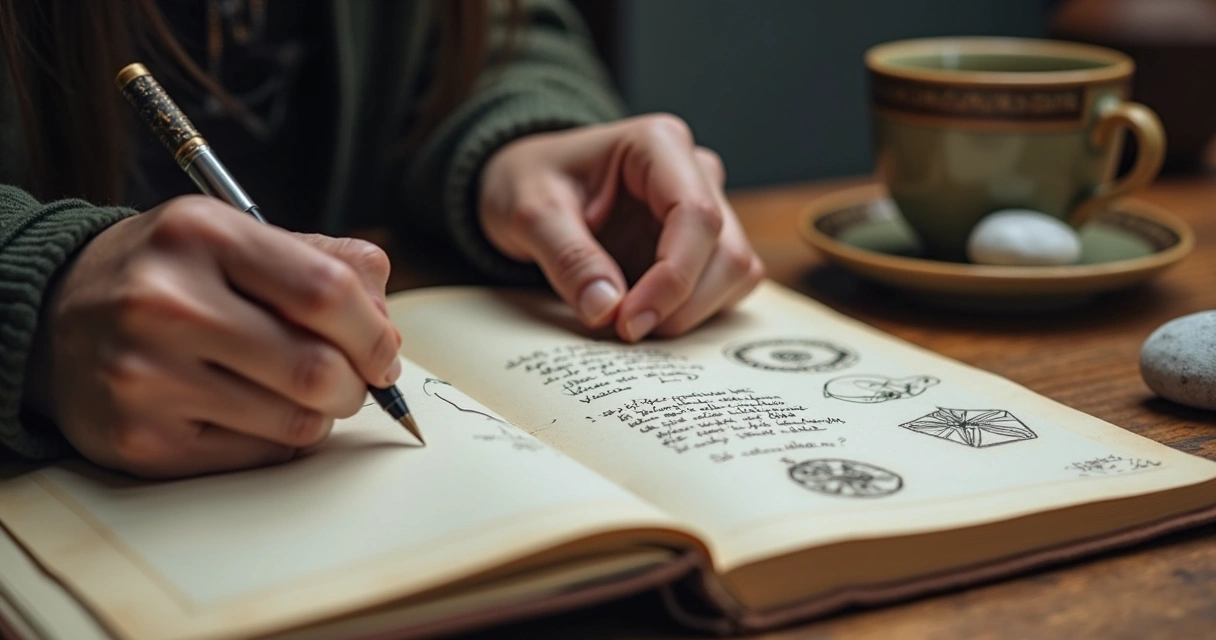 Recording and tracking readings for growth
Recording and tracking readings for growth
We have seen how systematic record-keeping transforms a casual practice into a meaningful path of self-discovery or client partnership. Each rune reading, when logged thoughtfully, becomes part of a living document—one that grows as we do.
With MysticLog's structure, it is easy to:
- Chronicle each reading by date, session type, and querent.
- Aggregate readings by theme, aettir, or rune clusters for pattern recognition.
- Review notes for ongoing growth, surprises, or shifts in understanding.
- Create custom tags for special rune combinations, such as “Protection Spreads” or “Career Blocks.”
Over time, we notice subtle changes in how we interpret symbols, respond to uncertainty, and engage with the wisdom beneath the runes.
Tips for building personal meaning
Working with the Elder rune set is a journey, not a destination. Here are a few suggestions for those at any stage of the journey:
- Give yourself time to sit with each rune. Some meanings might not “click” until they arise in a reading that touches your life directly.
- Balance book learning with intuitive insight. Both matter, and both shift over time.
- Join discussions and share your questions—let the community (or, in MysticLog, the AI assistant) offer alternative viewpoints.
- Don’t be afraid of uncertainty. Sometimes the “not knowing” is the ground where the best answers grow.
- Let your rune journal (digital or physical) be your companion. Write things that make sense only to you—even fragments or dreams.
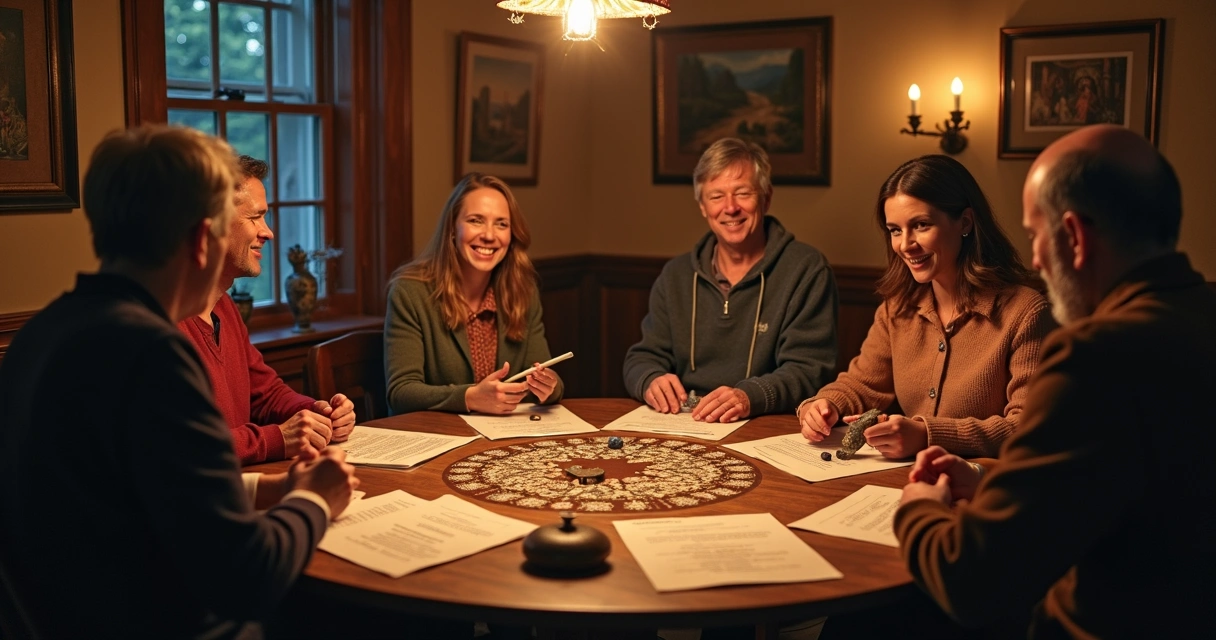 Remember, each rune is a signpost, not a final destination.
Remember, each rune is a signpost, not a final destination.
The enduring draw of Elder Futhark
Why do the runes remain so compelling? Perhaps it is because they carry the weight of history and the light of inspiration in each shape and sound. For diviners, therapists, storytellers, and seekers, they are both a challenge and a gift.
We invite you to approach these symbols with openness, reverence, and the willingness to be surprised. Whether you learn in community, one-on-one with a querent, or solo, the journey brings both reflection and transformation. And with supportive digital companions like MysticLog, the threads of your runic story remain clear and always within reach.
Listen to the runes. They have been waiting for you.
For further in-depth discussions about the history and uses of runes, consider reviewing the collection under runes articles on our site. And for a broad view of oracle systems overall, browse our oracles section.
If you sense a pull to weave the wisdom of the runes into your own readings—or your clients’—we invite you to get to know our platform, try our digital logbook, and let your curiosity meet tradition. With MysticLog, the past moves forward, and the path grows brighter.
Frequently asked questions about Elder Futhark
What is the Elder Futhark rune alphabet?
The Elder Futhark is a set of 24 symbolic characters used in early Germanic and Norse contexts, and it is considered the oldest form of the runic alphabets. The name "Futhark" derives from its first six runes: Fehu, Uruz, Thurisaz, Ansuz, Raidho, and Kenaz. Historical research suggests it was employed between the 2nd and 8th centuries AD for a variety of purposes, including writing, memorializing events or people, and, later, for magical or divinatory purposes. The University of Texas at Austin offers an excellent overview of its historical context.
How do I use Elder Futhark for divination?
Using Elder Futhark for divination means drawing or casting rune stones (or cards) and interpreting their meanings in response to a question or situation. Start by clarifying your intention, shuffling or mixing the runes, then drawing one or more. Use standard layouts such as a single rune, three-rune spread, or more elaborate patterns. Reflect on the traditional meanings and how they connect to your question. Recording each reading, with notes and insights, improves your practice over time. For a structured digital approach, recording sessions in MysticLog helps track progress and recurring themes.
What do the Elder Futhark runes mean?
Each of the 24 Elder Futhark runes embodies a unique symbol, sound, and concept. For example, Fehu represents abundance and beginnings; Uruz stands for strength and raw energy; Ansuz is connected to inspiration and wisdom; and Sowilo signifies success and clarity. Interpretations for divination often blend traditional definitions, Norse mythological links, and personal experiences. You can find in-depth descriptions of each rune's meaning and their practical use in divination in resources like our rune history and meanings guide.
Where can I buy Elder Futhark runes?
Most metaphysical shops and online retailers offer sets of Elder Futhark rune stones, tiles, or cards. Many artisans produce hand-carved sets from wood, stone, or clay for those who prefer a personalized touch. When buying, look for complete 24-rune sets, often accompanied by a storage pouch and a small guidebook. Making your own runes is also a respected and rewarding approach. Whatever route you take, choose the set that resonates with you for your practice.
Are Elder Futhark runes still used today?
Yes, Elder Futhark runes are actively used by modern diviners, students, historians, and spiritual practitioners around the world. While they have historical roots in ancient Northern Europe, contemporary interest in runes bridges academic study, personal growth, and divinatory work. Many people combine runic practice with Tarot and other oracles, or use digital platforms such as MysticLog for tracking readings and exploring meanings. Their cultural and spiritual significance only continues to grow.
